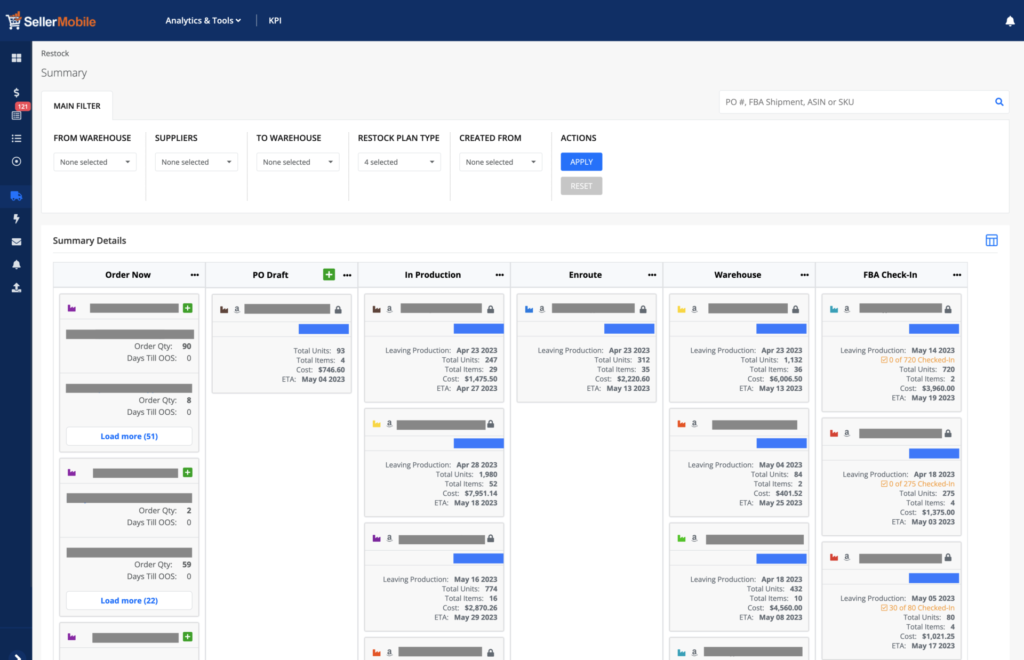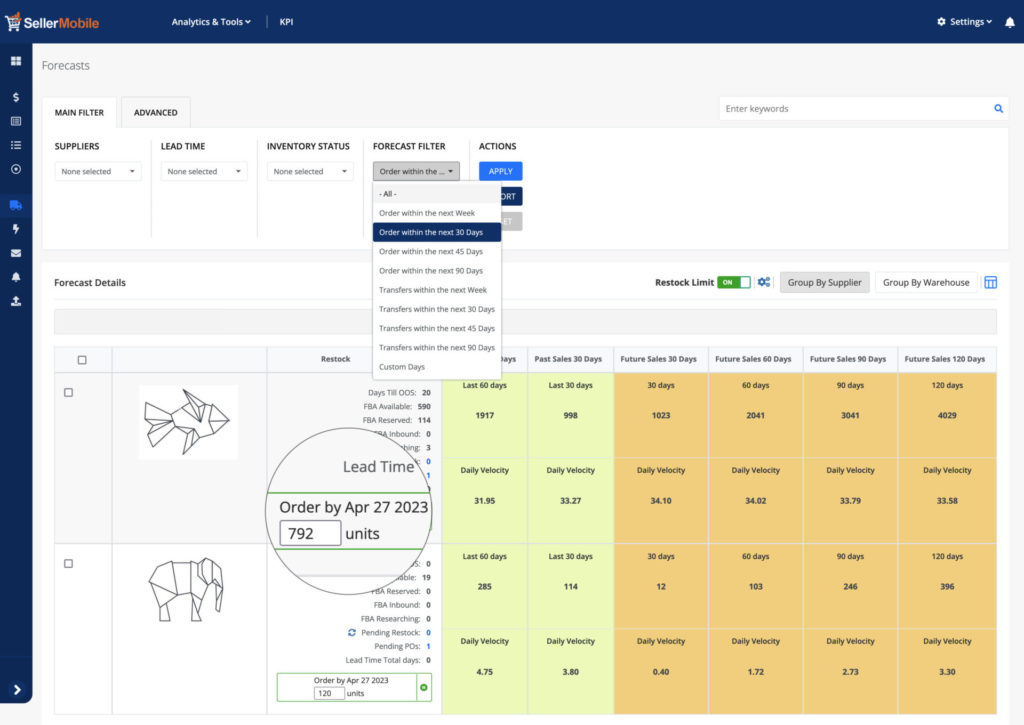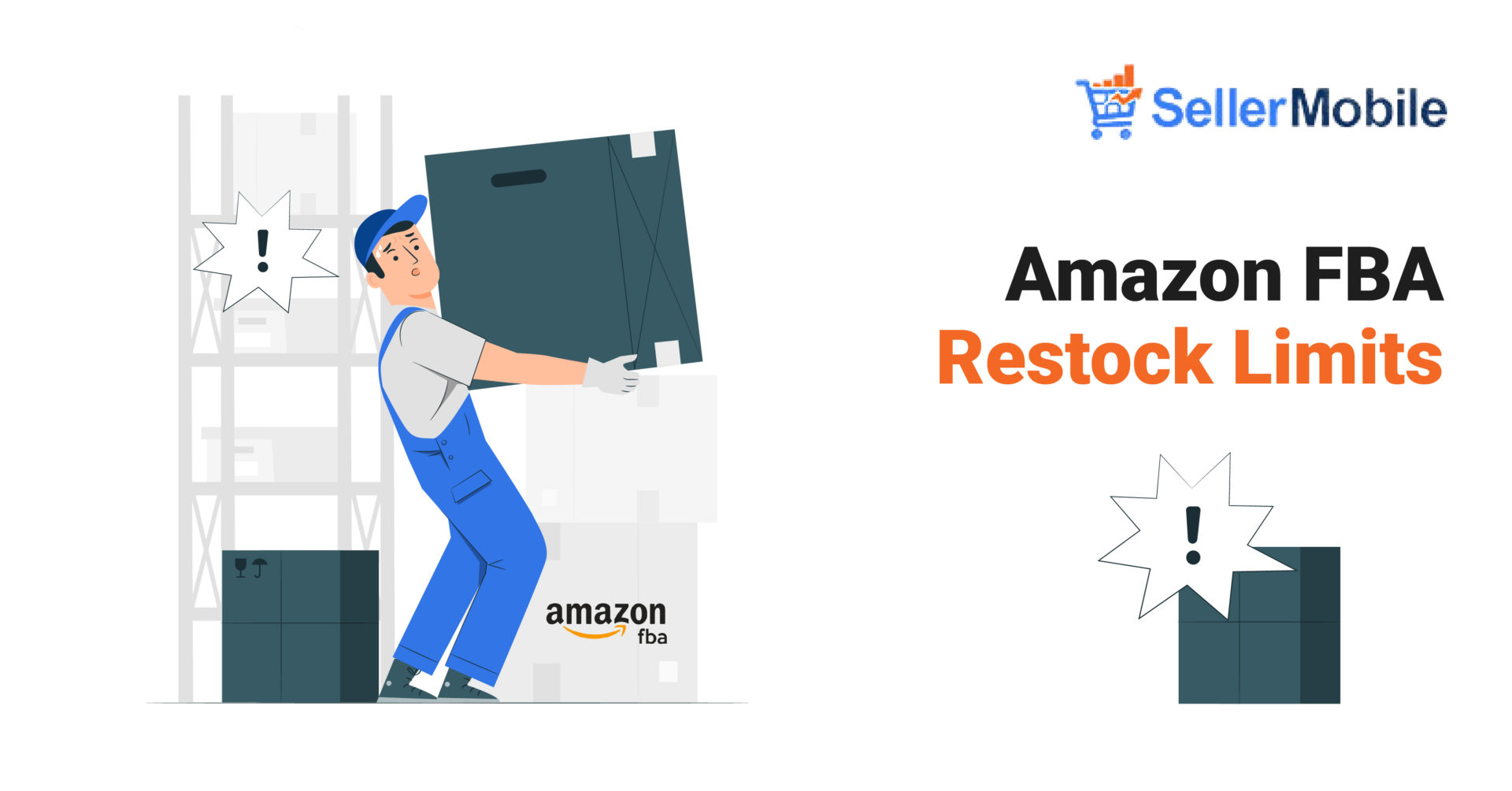Are you an Amazon seller looking to stay ahead of the game in 2023? Then you need to know about the upcoming restock limits Amazon will be implementing, as it can impact your inventory management and sales strategies.
Amazon has announced that starting in March 2023, it will be limiting the amount of inventory third-party sellers can send to Amazon fulfillment centers. This new policy aims to help prevent overstocking and improve warehouse efficiency. While Amazon has not provided an official statement detailing the reasoning behind this change, it is likely that the company is seeking to address issues such as high inventory storage costs and supply chain disruptions.
In this comprehensive guide, we’ll provide you with an in-depth overview of the new restock limits of Amazon, explain how they could impact your business, and provide you with solutions to adapt and thrive in the changing marketplace.
What are Amazon Restock Limits?
Restock limits set the maximum quantity of a specific product a seller can send to Amazon’s fulfillment centers for storage and fulfillment. These limits are determined based on a number of factors, like sales history, inventory levels, and demand for a particular product.
Restock limits are not universal and vary on a per-item basis. This means that different products listed in your inventory can have different restock limits. Additionally, these limits are not static and are adjusted frequently by Amazon to reflect changes in demand, inventory levels, and other factors.
How Does Amazon Play With Restock Limits?
During periods of low demand, Amazon may lower the restock limit for a particular product to prevent overstocking and reduce storage costs. Conversely, during peak seasons or periods of high demand, Amazon may increase the restock limit to ensure sellers can meet customer demand.
If a particular product is in high demand but there is a limited supply of that product, Amazon may adjust the restock limit to ensure multiple sellers have an equal chance to sell the product.
This ensures customers have access to the product from various sellers rather than just one or two. This approach also helps prevent a single seller from monopolizing the market, creating a fair and competitive environment for all sellers.
By adjusting Amazon restock limits, the platform can help meet customer demand while also supporting the success of multiple sellers. Therefore, it’s important to regularly monitor the restock limits for each product in your inventory to avoid stockouts and maximize sales.
Amazon Restock Limits During High Demand
Similarly, if there are too many competitors selling the same item, the restock limit may be lowered to prevent oversaturation of the market – a situation where the supply of a particular item is higher than the demand for it.
Why? Because oversaturation can lead to a number of negative outcomes, including reduced profits for individual sellers and the potential waste of excess inventory.
By setting a lower restock limit, Amazon aims to keep the market balanced and ensure there is enough supply to meet demand without creating an oversupply that could harm both sellers and buyers.
How to Use Restock Limits to Your Advantage
While restock limits can be perceived negatively at first because of the selling constraints they provide, there is a good side to them as well! Amazon restock limits can reduce the risk of overstocking and unsold inventory, resulting in cost savings and increased profitability.
Additionally, restock limits can help sellers manage their inventory more efficiently, preventing stockouts and ensuring prompt delivery to customers.

Understanding and implementing restock limits can help sellers stay competitive on the platform and meet the needs of their customers.
How to Access Restock Limit Information
When selling on Amazon, it’s important to keep track of your inventory levels and restock limits to ensure you have enough stock on hand to meet customer demand.
- Log in to your Amazon Seller Central account.
- Click on the “Inventory” tab in the top navigation bar. This will take you to a page where you can manage your inventory.
- Select “Manage Inventory” from the dropdown menu. This will open a list of all the products you have listed on Amazon.
- Find the product you are interested in and click on it to open the product detail page. You can search for the product by ASIN, SKU, or product name.
- Scroll down to the “Restock Inventory” section. This section will show you the current restock limit for the product, as well as the current number of units in stock and on order.
- You should see the current restock limit for that product listed there. Note that Amazon restock limits are typically updated every few weeks, so it is important to check them regularly.
If you need to increase the restock limit for a product, you can request a limit increase by clicking on the “Request an increase” button located in the “Restock Inventory” section. Amazon will review your request and may agree to increase the limit based on your sales history, available storage space in their fulfillment centers, and other factors.
Common Issues You May Face When Checking Your Restock Limits Information
Occasionally, sellers may encounter issues with their restock limit information, such as inaccurate or outdated limits. Here are a number of such issues and ways to address them.
- Delayed updates: Restock limit information is typically updated every few weeks, but updates can sometimes be delayed. If you believe your restock limit information is outdated, reach out to Amazon Seller Support for assistance.
2. Low restock limits: If your restock limit is lower than expected, it may be due to changes in demand or competition for that product. Consider adjusting your pricing strategy or promoting your product to increase sales and improve your restock limit.
3. Technical issues: If you encounter technical issues when checking your restock limit information, such as error messages or slow loading times, try clearing your browser cache or accessing the information from a different device.
The Best Practices for Dealing With Amazon Restock Levels
Here are some best practices to consider:
- Set Par Levels: Determine the minimum amount of inventory you need to keep on hand to avoid stockouts. Use historical sales data to calculate your average sales velocity and set par levels accordingly.
- Forecast Demand: Use forecasting tools to anticipate demand and plan inventory levels accordingly. Accurate forecasting can help you avoid overstocking and reduce storage fees.

- Monitor Lead Times: Keep track of lead times to ensure you have enough inventory on hand to meet demand. Long lead times can lead to stockouts and lost sales.
Review Sales Velocity: Monitor your sales velocity regularly to ensure that you are not overstocking or understocking. Adjust inventory levels based on changes in demand.
Tools and Software to Help You Manage Inventory and Stay Within Amazon Restock Limits
Managing inventory so that you always have enough stock on hand while not exceeding acceptable restock levels can be a time-consuming task if done manually. But with an automated inventory management software like SellerMobile, managing your Amazon business can become a breeze.
SellerMobile is a software solution that seamlessly integrates with your Amazon Seller Central account to get real-time updates on your inventory changes (new order, low stock items, etc.) and promptly notify you when the action is needed (need to restock, need to answer a negative review, etc.).
One of the key benefits of using SellerMobile is controlling your inventory levels by purchasing and restocking based on historic and forecasted sales. There is also an automated repricing feature that automatically adjusts your product pricings based on a product’s seasonality, competition, and prices on the market. Overall, the tool helps you with the right pricing strategy to increase revenue, order margins, and secure Amazon Buy Box wins.
The Key SellerMobile Features to Deal With Amazon Restock Limits
Restock Alerts: You can receive alerts when inventory levels fall below your set thresholds, so you can reorder in time to avoid stockouts. The system will notify you about when to restock, which items need to be restocked and at what quantities.

Additionally, with SellerMobile’s inventory analysis feature you can always track real-time updates on your inventory; what is selling well and which items are idle, and are there profit gaps that can be filled?

SellerMobile automatically analyzes and displays all Amazon data in a user-friendly way, allowing sellers to get a clear overview of their business and receive actionable advice to maximize sales profit.
Top Strategies to Stay Within Restock Limits Without Compromising on Sales
Staying within Amazon restock limits without compromising sales can be a challenge, but there are strategies you can use to handle the situation effectively. Here are several strategies to consider:
- Optimize Listings: Optimize your listings to improve sales velocity and reduce storage fees. Use high-quality images and descriptions, optimize keywords, and monitor performance regularly.
- Prioritize Best-Selling Products: Prioritize your best-selling products to maximize sales velocity and stay within restock limits. Use data analysis tools to identify your top-selling products and focus on those.
- Use Just-in-Time (JIT) Inventory: Use a JIT inventory strategy to minimize inventory levels and reduce storage fees. With JIT, you order inventory only when it is needed, rather than keeping large amounts on hand.
Tips to Boost Sales Despite Restock Limits
While restock limits are general rules that apply to every Amazon seller, there are still ways to increase restock limits or mitigate the impact by enriching your listings.
An effective way to overcome restock limits is to diversify your product offerings. This means expanding your product catalog to include new items that are not subject to restock limits.
Consider adding complementary products or new product lines to your inventory. By diversifying your offerings, you can reduce your reliance on any one product and increase your sales potential.
The Bottom Line
The implementation of Amazon restock limits in 2023 will impact sellers, but there are steps you can take to mitigate the effects. Understanding how restock limits work, checking your restock limit information regularly, and following best practices for inventory management are all key to success.
Amazon inventory management tools like Sellermobile help sellers stay on top of their inventory and manage restock limits effortlessly.





